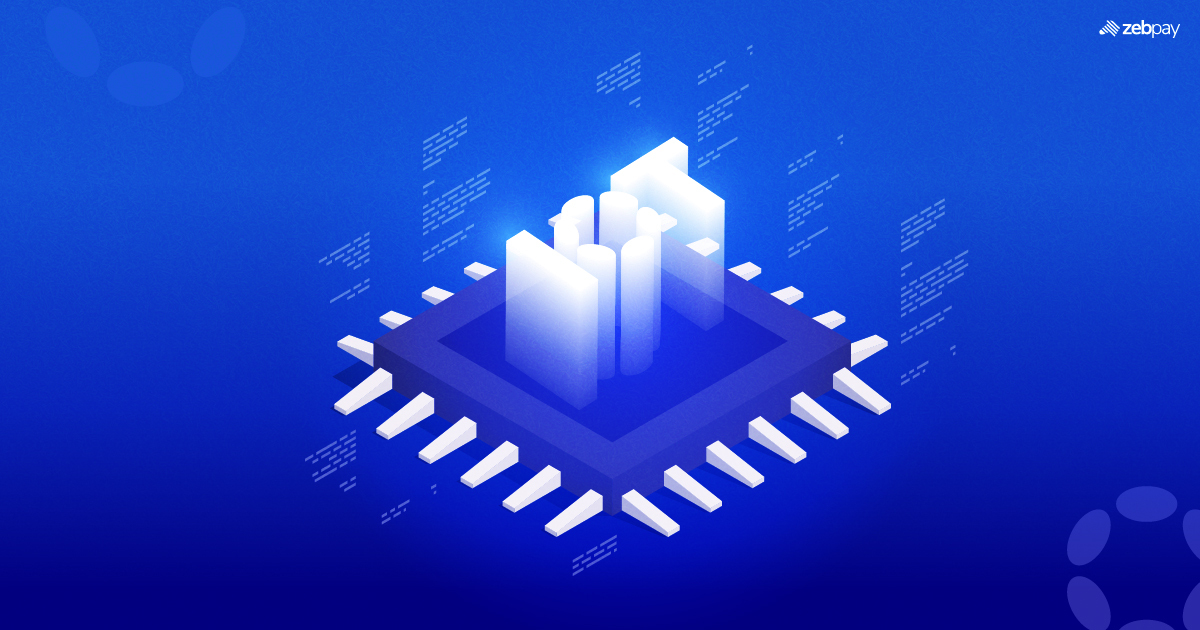The Internet of Things (IoT) consists of almost everything, including smartphones, computers, smart speakers, heart monitors, and even car engines, changing how we live, work, and interact with the world. It interconnects everyday objects to send and receive data without human intermediaries. There is a need for a scalable and interoperable infrastructure to support the ever-expanding IoT ecosystem. The Polkadot network is an innovative crypto platform that supports the seamless integration of multiple blockchains and can play a vital role in the IoT revolution.
Polkadot’s Role in Enabling IoT
IoT systems are known for their scale and dynamic nature. There is a need for a flexible and interoperable infrastructure as the number of connected devices continue to rise rapidly. There is a need for IoT systems to easily accommodate new devices and adapt to changing environments without disrupting their current functionalities. Flexible and scalable architectures can address IoT challenges to ensure seamless integration of new technologies and devices.
Polkadot is a multi-chain network that enables the movement of crypto assets and data across multiple blockchains. Its unique infrastructure enables the creation of specialized blockchains, known as parachains. These parachains can be customized for specific IoT purposes. They are connected to the Polkadot network, known as the Relay Chain, enabling them to interact with each other.
Read more: What is Polkadot (DOT)
IoT Use Cases on Polkadot
There are several IoT applications on the Polkadot network. It can be used to build decentralized energy grids. IoT devices such as solar panels and Smart meters can interact with each other to optimize energy consumption and distribution. Polkadot can also support the development of decentralized supply chain management. It can allow IoT devices to track and verify the provenance of goods. The industrial Internet of Things (IIoT) uses actuators, Smart sensors, and radio frequency identification tags to improve industrial processes. Polygon can help connect these devices to provide data collection and analysis.
Secure and Trustworthy Data Exchange
IoT devices can generate a vast amount of data and a report from the US Federal Trade Commission found that 10,000 households can produce 150 million data points daily. This can leave your sensitive data vulnerable, as it creates multiple entry points for hackers and cyberattacks. Polkadot has many solutions to address security issues, such as implementing transport layer security (TLS). TLS is a protocol that employs data encryption to secure connections between applications and web servers. This protocol can protect all data transfers over a crypto network, such as file transfers and emails. It also makes it hard for hackers to steal sensitive information such as credit card numbers, login credentials, and passwords. Polkadot users use peer-to-peer networking stacks to send blocks, transactions, and sensitive data without intermediaries. Polygon also offers a unique solution known as Polygon ID to establish trust between dApps and users. Polygon ID uses the principles of privacy and self-sovereign identity to create online identities in the form of DIDs (Decentralized Identifiers).
Polkadot’s Role in IoT Data Marketplaces
Data monetization involves turning your data assets into profit-generating opportunities. It is not just about collecting data but also about getting insights for creating value. Today, companies have access to vast data, such as operational metrics and customer behavior, that can transform multiple industries. The Polygon network ensures data integrity by employing Checkpoint management systems. Checkpoint management involves recording a snapshot of the state of a system at a specific time. They increase blockchain security by enabling faster verification of blockchain states without processing all block transactions. This process can be used to prevent cyberattacks such as 51% attacks and speed up sync times for new nodes.
Read more: Polkadot Staking : A Complete Guide
Interoperability and Integration with IoT Protocols
One of the significant challenges of the IoT ecosystem is the lack of interoperability between different devices. This interoperability issue is because various IoT devices use multiple data formats and communication protocols, making it hard for various devices to work together. Polkadot can address this issue as it can interconnect multiple blockchains and support cross-chain communication. It can enable a more efficient and unified IoT ecosystem.
Apart from solving interoperability issues, Polkadot can also enhance the scalability and security of IoT systems. Each parachain can operate independently, so Polkadot ensures that the congestion of one chain does not affect the performance of other chains. This feature can prove vital for IoT systems, as according to Statista, the number of connected devices will reach 75 billion by 2025. Polkadot can offer scalability solutions without compromising network security, which is vital for the long-term success of the IoT ecosystem.
MXC, or machine eXchange coin, is an example of an IoT Polkadot collaboration. This project aims to create a global communication network for IoT devices. It employs LPWAN (low power wide area network) technology to achieve its objective. Noodle IoT is another example of this collaboration. It aims to provide uninterrupted access to IoT devices. It is working towards providing solutions to bike-sharing and logistics services. The Robonomic Network was launched in 2017 to control robotics. It aims to take advantage of Ethereum and Polkadot to create a variety of dApps for automation purposes.
Future Outlook and Potential Development
The Polkadot network is predicted to support seamless integration between AI carriers and IoT systems. This feature will enable companies to carry out secured automation functions without external intermediaries. It offers multiple solutions to support the IoT revolution and can shape the future of this industry. It can serve as the backbone of the IoT ecosystem by enabling scalability, interoperability, and robust network security. Polkadot will play a vital role in IoT ecosystem development leading to a more efficient and connected world.
To stay up to date with the latest crypto news, visit ZebPay blogs. Click on the button below to trade on ZebPay.







